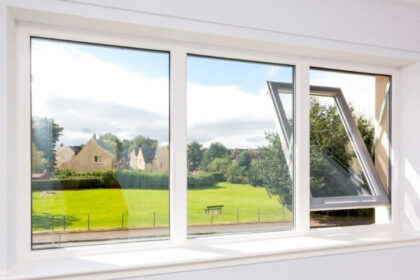
Windows serve many purposes beyond simply letting in light. They impact appearance, comfort, energy efficiency, and more. With so many great options on the market, it’s important to understand the most popular window types and their key differences. Casement, sliding, and tilt and turn varieties all boast strong points for various applications. However, choosing blindly without knowing attributes like ventilation, cleaning access, and suitable locations could mean overlooking a better fit. This quick guide examines the most common window styles along with their pros, cons, and ideal uses to help you choose types tailored to your specific needs.
The Most Popular Types of Windows
Homeowners have many window types to choose from. Selecting the right one starts with knowing the basics. Casement, sliding, tilt and turn, flush sash, and more each bring unique features.
Casement Windows
Among the most universal styles, casement windows feature side-hung sashes that open outward from the side like a door would. This hinged operation is ideal for rooms where space is limited like bathrooms, as the sashes do not slide into the wall. Casements provide excellent cross-ventilation and easy interior cleaning access. However, their outward-swinging panes require additional wall space compared to sliding or tilt-and-turn varieties.
Vertical Sliding Windows
Often seen on porches, vertical sliders contain an upper and lower sash that slide vertically past one another in overlapping tracks. When open, the upper and lower panels settle tightly into pockets at the sides of the window frame. This stacking function allows large openings for ventilation without blocking the view or intruding on outdoor space. However, there’s a risk of potential air and water leaks around the sliding tracks over time if not properly maintained.
Tilt and Turn Windows
A sophisticated Euro style, tilt-turn windows offer versatility. The sashes can be tilted inward like a casement at the top for ventilation and easier interior cleaning. Or, the entire pane can be “turned” inward like an entry door when fully open. This dual functionality provides excellent airflow and multipoint locking for enhanced security. Though versatile, tilt and turn windows typically carry a higher price point than basic sliding or casement options.
Flush Sash Windows
For a seamless modern aesthetic, flush sash windows set their panes flush within the frame when closed. No projecting parts interrupt the clean exterior appearance. This minimalist style coordinates well with sleek contemporary architecture. However, flush sashes tend to cost more to produce than traditional window types due to the precision engineering required for a flush fit.
Bays and Bows
Distinctive bay or bow window units create architectural interest with their curve or multiple angles. Additional glass results in abundant natural light. Yet custom sizes require specially-engineered frames and structural framing adaptation during installation which drives up costs. The complexity also means higher energy needs to heat and cool disproportionate glass compared to standard window sizes.
Fully Reversible Windows
An innovative window variety for those demanding optimum fresh air, fully reversible windows function like large doors that swing fully inward or outward. When open, they maximize cross breezes without obstructions. Multipoint locks preserve security too. Nonetheless, manufacturing the fully reversible pane brings a higher price point than conventional inward/outward operating casements.
Overall, choosing window types carefully for your specific home and climate ensures maximizing benefits like security, airflow, and style. Considering factors from budget to energy efficiency helps personalize window selection. With knowledgeable assessment, you can match ideal types to maximize your home’s potential.
Need to discuss all our options? Contact us now.

